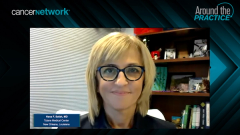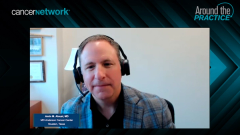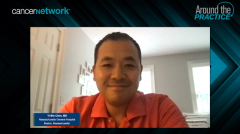
Optimal Staging Strategies for Chronic Graft vs Host Disease
Expert hematologist/oncologists highlight challenges in staging chronic graft vs host disease and share strategies to optimize cGHVD assessment.
Episodes in this series

Transcript:
Yi-Bin Chen, MD: This patient appears to have multiple organ involvement of chronic graft-vs-host disease [GVHD]. Armin talked about how we stage acute GVHD. Nelson, can you talk about how we stage chronic graft-vs-host disease?
Nelson J. Chao, MD, MBA: For years we didn’t do a very good job. DNA consensus criteria came out over 10 years ago, and each potential organ got scored from a score of 0 to 3. The sites that are typically affected are areas like the skin, the mouth, the eyes, the GI [gastrointestinal] tract, lung, and liver. Each organ gets a score, and then we add these scores up. This was pretty instrumental in allowing different centers to conduct clinical trials so that we’re talking the same language instead of just saying, “This is limited,” “This is extensive,” and “That was it.” It’s much more of a formal assessment. Adding performance status makes a big difference for that analysis as well.
Yi-Bin Chen, MD: I totally agree. It’s helped with the ability to conduct clinical trials. I’ll admit that it’s often difficult because of the many organs, the numbers, and it may be because it’s not the same person assessing. That has thrown in wrinkles. You run the graft-vs-host disease clinic at The University of Texas MD Anderson Cancer Center. I’m sure you go through this with trials a lot. Do you share the same issues? How do you fix that or standardize that?
Amin M. Alousi, MD: Yes. It’s very difficult getting every clinician trained on doing a chronic GVHD assessment. Once you train clinicians on how to do it, it can be done. Studies have shown that it can take as little as 10 to 15 minutes. But getting everyone on board to do it regularly and document it in the correct fashion is very challenging. Many places, including MD Anderson, have standardized this by having a set team of clinicians and APPs [advanced practice providers] do these assessments, on a calendar-driven basis, on all their patients. That’s what we do at MD Anderson. We have a dedicated team that, on a calendar-driven basis¾day 100, 6 months, 9 months, a year, 18 months, 2 years etc¾ does formal chronic GVHD staging and has consistent data for all patients. If no one is doing the assessment, then the patient doesn’t have GVHD. That’s how we’ve approached it at MD Anderson, by having a standard group of people do it. When we do clinical trials, where it’s important to assess response, having a dedicated clinic that does that has allowed us to participate in those trials. Certainly, it could be done in other ways, but that’s what we’ve found helpful.
Yi-Bin Chen, MD: It’s definitely an improvement from what Nelson described before, in terms of the classification, but it’s still bulky at times and takes buy-in from everyone to make it work. It’s the nature of the disease, given how heterogenous it is.
Transcript edited for clarity.
Newsletter
Stay up to date on recent advances in the multidisciplinary approach to cancer.






















































































